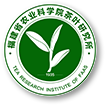Abstract:
Objective Correlation between the resistance to infestation and the leaf morphological properties and chemical composition of tea plants was investigated for improved pest control and new variety breeding.
Method Natural Acaphylla theae population dynamics at the planting fields of ‘Meizhan’ and ‘Fuyun 6’ tea bushes were monitored. Leaves of the plants at the lots were collected to measure the trichome density under a stereomicroscope, leaf area with a vernier caliper, contents of free amino acids, photosynthetic pigments, tea polyphenols, and total flavonoids by spectrophotometry, and caffeine and flavonoid components including naringenin, quercetin, myricetin, apigenin using HPLC. Statistically, the mite population was correlated to the leaf morphology and chemistry of the tea cultivars at a same field.
Result The population of A. theae at the ‘Fuyun 6’ lot was significantly more numerous than at the ‘Meizhan’ lot. And the area, trichome density, and contents of chlorophyll a, chlorophyll b, and total chlorophyll of the leaves of ‘Fuyun 6’ were significantly higher than those of ‘Meizhan’ plants. However, the young ‘Meizhan’ shoots contained significantly more caffeine, total flavonoids, naringenin, quercetin, myricetin, and apigenin than the ‘Fuyun 6’ counterparts. A significant positive correlation was observed between the A. theae density of leaf and the content of chlorophyll a, chlorophyll b, total chlorophyll, naringin and the leaf length, a highly significant positive correlation with leaf area, while the correlation was negative between the pest population and the content of naringenin and quercetin.
Conclusion According to the surveyed A. theae population in the fields, ‘Meizhan’ tea bushes appeared more resistant to A. theae infestation than did ‘Fuyun 6’. The biochemicals responsible for the differentiation might include chlorophyll a, chlorophyll b, total chlorophyll, quercetin and naringenin contained in the leaves of the different varieties of tea cultivars. This study provides a theoretical basis for the comprehensive management of A. theae and resistance breeding.




 下载:
下载: